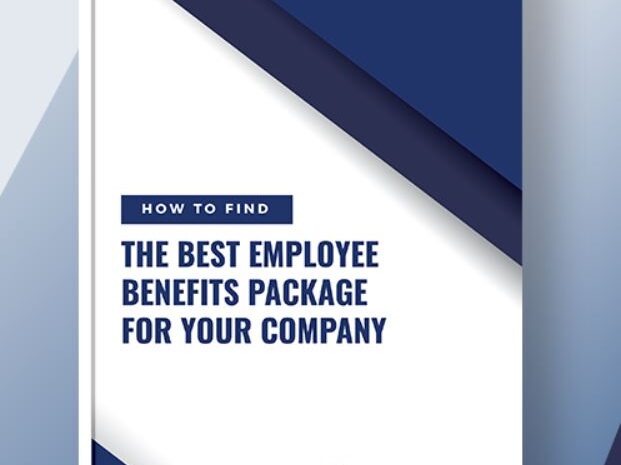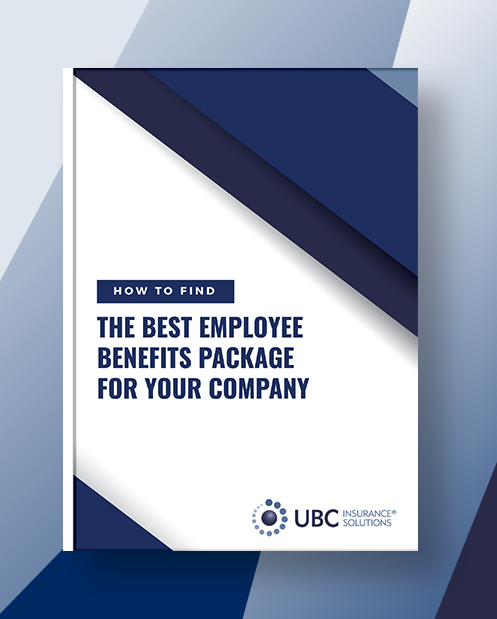
How to find the best employee benefits package for your company
It’s impossible to overstate the importance of choosing your employee benefits package. According to a poll conducted by the software company Zenefits, 70% of employees say benefits are a major factor in evaluating job opportunities. If you want to attract and retain talent, a good benefits package is vital.
Choosing an employees benefits package is a delicate balance between enticing employees and keeping your own company’s budget in mind. It would be wonderful if every company could offer the most comprehensive benefits possible, which cover both the employee and their family. However, the truth is you have to make some tough calls. Small businesses especially may be limited in their options.
If you’re deciding on an employee benefits package, we’ve provided a brief guide below to walk you through the process.
Create A Budget for Employee Benefits Package
Before you even start browsing benefits packages, take a look at your financial plan and projections to get a ballpark estimate of your budget.
In general, you should budget about 20 to 30% of an employee’s salary for benefits. An employee earning $50,000 a year, for example, will cost you $60,000 to $65,000 a year. Obviously, a more comprehensive benefits package will fall on the higher end of that range.
There’s also taxes to consider as employer benefits are subject to income tax withholding and employee taxes. Plus, fringe benefits – like moving expenses or commuter benefits – are taxable to the employee. The IRS website should be able to give you a detailed overview of different benefits-related taxes.
What Do Your Employees Want in a Employee Benefits Package?
A recent Glassdoor survey identified five benefits as the most important to employees: health insurance, vacation/paid time off, a pension plan, a 401K, and a retirement plan.
Again, you have to make tough calls when deciding on an employee benefits package. If you’re trying to attract quality employees to your company, think about what would be attractive to the types of employees you’re looking to hire.
If your employees tend to be on the younger side, things like life insurance or a pension plan may not be a must. Older employees may value these perks more, as well as a retirement plan or a 401K.
Keeping some benefits optional is also a good idea. Different employees can pick and choose benefits based on their personal needs. An older employee, for example, could opt-in to a life insurance policy while a younger employee could pass on that.
Healthcare Benefits
Some benefits are non-optional. If you have employees in the state of California, you must provide the following:
- Social Security Tax: This tax funds the social security program that provides retirement benefits to Americans.
- Workers Compensation: This is insurance you pay that goes towards wage replacement and medical bills for workers injured on the job.
- Unemployment Insurance: Paid to the US Department of Unemployment, these taxes provide wages, career guidance, and more to employees fired or laid off.
- Family and Medical Leave: You are required to provide 12 weeks of unpaid leave for family or medical emergencies.
- Time Off To Perform Civic Duties: Civic duties include things like jury duty and military service. You are required to provide unpaid time off for employees to perform these duties.
If you have 50 or more full-time employees, you must provide the following:
- Health Insurance: You must provide health insurance options to full-time workers.
- COBRA Insurance: The Consolidated Omnibus Budget Reconciliation Act means you pay premiums so laid off employees can receive healthcare benefits until they find new work.
Companies that invest in employee health and well-being tend to have better retention rates. Therefore, healthcare is one of the most important parts of an employee benefits package.
In California, residents are required to have health insurance unless they can get an exemption. If you do not have coverage for an entire year, you have to pay a penalty tax of at least $750 per adult and $375 per child.
Some of the basic options for healthcare plans include:
- Managed Care: These include Health Maintenance Organizations (HMOs) and Preferred Provider Organizations (PPOs).
- With HMOs, employees must use doctors employed under or contracted by the HMO as well as the hospitals the HMO approves.
- With PPOs, the insurance company provides discounts with physicians and hospitals in its network.
- Self-Insured: Your company works with an outside company to set up coverage. Your business pays the claims or helps employees pay premiums. (Not usually available to smaller businesses.)
- Partially self-funded plan: Your company pays a level or steady fee each month, determined by a third party administrator or the insurance carrier.
- Flexible Spending Account (FSAs) and Health Savings Accounts (HSAs): FSAs and HSAs are accounts where employees can put aside a portion of their income to use toward healthcare costs. Employees usually receive a debit card to use for qualifying expenses like copayments and deductibles.
There’s no perfect formula for picking the right healthcare plan for your company. Consider the following when making a decision on a plan:
- What’s your budget? Obviously, some options are pricier than others, and you don’t want to overspend on a plan. Take a long look at your financial resources before making a decision.
- How old are you employees? Companies with younger employees do not necessarily need to offer plans that cover families, which can save you money.
- How much can your employees contribute? Insurers usually require companies to cover half the premium, but may be unwilling to sign with you unless three-quarters of your eligible employees opt-in.
In addition to regular healthcare benefits, employees may also offer benefits including dental insurance and vision insurance, which are typically available on a voluntary basis with no cost to the ER. These will cost you extra, but may be worth it if they’re affordable for you. An expansive benefits package will attract top-tier talent to your team.
Vacation and Paid Time Off
An easy thing to add to an employee benefits package is vacation days and paid time off.
Offering vacation packages and paid time off doesn’t just help you recruit talented employees. It’s better for your team overall. Employees who are able to take breaks to recharge when necessary are more productive.
Vacation time is a low-cost benefit, with two weeks paid leave being fairly standard. About 66% of employees fail to use all their vacation time, so companies actually make using their vacation days mandatory to avoid burnout and stress.
Retirement Savings Programs
Even if retirement is a long way off, many employees are thinking ahead. Offering a retirement savings plan, if it’s within your budget, can be a great way to recruit employees.
One of the major advantages of offering a retirement plan is that it sets you apart from the competition, especially if you’re not a huge company. Only 15% of mid-sized companies offer a retirement savings program.
The most popular type is a 401(k) plan, which is a voluntary retirement savings plan. Workers who opt-in contribute a portion of their pre-taxed earnings to their 401(k). Some employers even match contributions on a tax-deductible basis.
While providing a 401(K) plan is currently voluntary, by June 30th, 2022 they will be required by any California employer with over five eligible employees.
Other Benefits
We’ve covered some of the most talked about benefits, but many companies choose to offer benefits that are slightly less common.
Maternity/Paternity Leave
In the State of California, new mothers generally get up to 12 weeks of maternity leave to care for and bond with their new babies, and fathers are entitled to up to 6 weeks of baby bonding time off of work. State disability and baby bonding only replace 60% of the parents’ income, though. During this most crucial of times for a family, that missing 40% income can be cause for undue stress on a new family. Short Term disability products can help fill that income gap.
For many young and middle-aged employees, a company’s policy with regards to maternity and paternity leave could be a deciding factor when seeking employment. Having the right benefits available, such as short-term disability, can be key in recruiting and retaining talent.
Sabbaticals
Sabbatical leave is a rare but not unheard of benefit. Sabbaticals allow employees paid or unpaid leave to travel, live in another city, or pursue a passion for a set period of time. A sabbatical could last a few months or a few weeks.
Sabbaticals can increase retention and company loyalty, but may benefit your company in other ways depending on your field. For example, a private art school may attract students based on the teacher’s credentials and accolades. Letting a teacher go on sabbatical to write a novel could potentially reflect well on your program down the road.
Flextime
Many employees are attracted to a flexible work schedule. Flextime means letting employees work nontraditional shifts as long as they complete assignments in a timely manner. For example, flextime may mean a 4-day work week or telecommuting.
Project-based jobs could benefit from flextime, and it could even increase productivity. A typical Monday to Friday 9 to 5 schedule can cause burnout. Letting employees work only until necessary tasks are finished can be enticing for workers and beneficial to your company.
The Bottom Line
There is no single employee benefits package that works for every company, and there’s no precise formula to identify the best choice for you. Selecting a benefits package means carefully weighing your options. What can your company afford and what would be the most beneficial to your workers? Answering these questions will ultimately help you make the right choice.
Need some help deciding? UBC Insurance Solutions, Inc. works one-on-one with clients to find affordable, effective employee benefits packages. Reach out here to set up a consultation.




